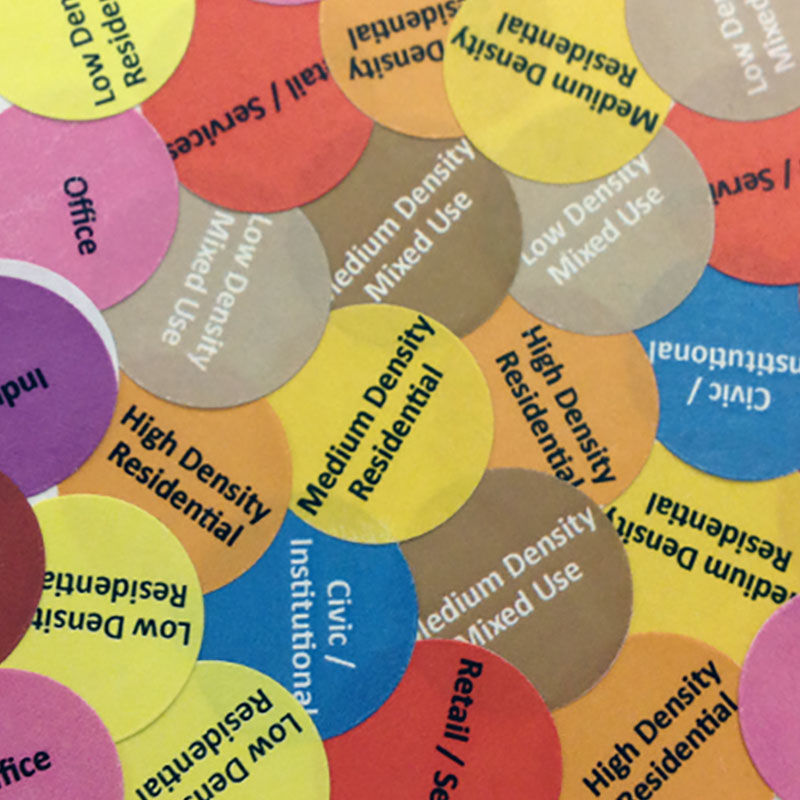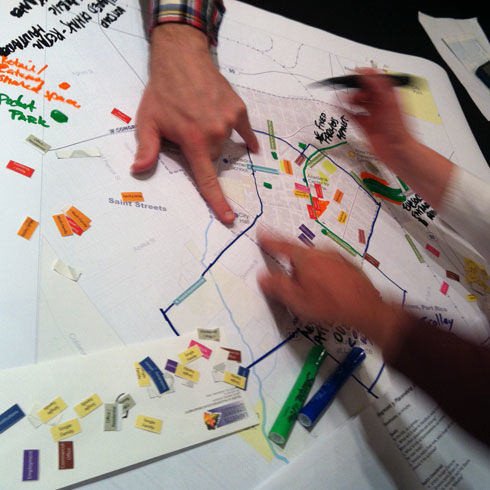No, this isn’t the Hunger Games, but sometimes when it comes to discussing how and where a community will grow, disagreements can be just as brutal. Fortunately, planners have a healthier, more fun way to help communities decide their fates: chip games.
Say your community is projected to grow by 15,000 households over the next 20 years. What will that look like, and where will the growth go? Chip games provide a way for community members to visualize an array of future development choices. Should the new households live in high rises or on 2-acre lots? Where will they work? In a chip game, small groups work together to talk through these issues, make decisions, and illustrate their preferred pattern of development on a large printed map.

